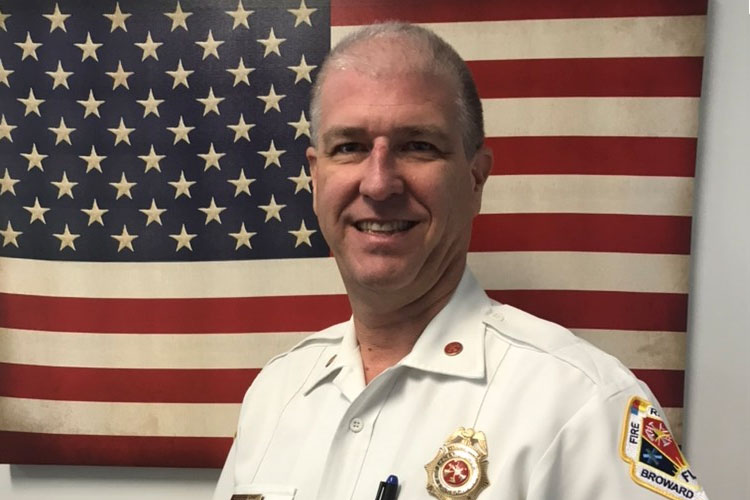

By Todd LeDuc
We have all witnessed within the fire service the heightened focus on addressing the occupational threat of carcinogen exposures. However, the “elephant” in the room is the magnitude of this scourge. Data compiled by the International Association of Firefighters (IAFF) reports that cancer has caused 61 percent of career firefighter line-of-duty deaths (LODDs) since 2002. We know from the largest-conducted study of occupational cancer rates in firefighters, undertaken by the National Institute of Occupational Health and Safety, that firefighters have elevated rates of certain types of cancers than the general population. We also know that firefighters also die at higher rates of certain types of cancers than the general population. As compared to the sudden deaths of cardiovascular disease or traumatic LODDs on the fireground or burn injuries, cancer is often a slow and insidious killer of firefighters.
RELATED: Fire Engineering Chief Bobby Halton Interviews IAFF President Harold Schaitberger | Occupational Cancer and the Fire Service | Improving the Culture of Cancer Risk Reduction and PPE Cleaning
The fire service industry and profession is evolving rapidly with the guidance provided by far-reaching, evidence-based research. Transformational approaches to tackling fire service occupational cancer have touched on apparatus cab design, redesigned personal protective equipment, exhaust capture systems, cleaning of exposed individuals and their tools , and even station design and decontamination procedures and processes, to name a few. However, each member of the service needs to embrace the mentality of “What Actions Have You Taken” (WAHUT, as I informally refer to it) personally to address factors within your control that can affect your exposure risk to carcinogenic toxins.
The Firefighter Cancer Support Network (FFCSN, www.FirefighterCancerSupport.org) has developed 12 actionable steps that are totally within the control of you and your crew. These include strict adherence to using your SCBA and remaining on air from initial attack throughout overhaul—whenever you are likely to be exposed to byproducts of combustion. Not all byproducts of combustion are easily detectable by remote monitoring and the safest protection is to remain on air. Perform gross field decontamination of personal protective equipment at the earliest opportunity on seat to remove as much particulate matter as possible and limit absorption from skin contact. Use some type of a “Wet-Nap” or baby wipe to remove as much soot from head, neck, jaw, throat, underarms, and hands, which has been demonstrated to decrease the amount of particulates that can then be absorption through the skin into the bloodstream. Additionally, the sooner you are able to change and clean your clothes as well as shower thoroughly further limits absorption and cross-contamination.
RELATED: How Can We Kill the ‘Toxic Snake’ of Cancer? | Why Cancer Is Killing Boston’s Firefighters | The Columbus Dispatch Examines Firefighters and Cancer | Reducing Cancer and Heat Stress LODDs
All personal protective equipment should be thoroughly cleaned, including gloves, hood, helmet, etc. The interior of the apparatus cab should also be cleaned. It is also essential to keep soiled bunker gear outside of living and sleeping quarters. Avoid using tobacco products, which are directly linked to cancer.
Finally, get a fire service/firefighter-appropriate physical exam each year, with early appropriate cancer screenings aimed at early detection and treatment. Specific guidance for your health care provider is detailed in the International Association of Fire Chief’s Safety, Health and Survival Section’s “Healthcare Provider’s Guide to Firefighter Physicals” and can be located at www.Fstarresearch.org/GetChecked.
 Todd J. LeDuc, MS, CFO, FIFirE, is a 27-year veteran of and an assistant chief with Broward County (FL) Fire Rescue, an internally accredited metro fire department. He is also the secretary of the International Association of Fire Chief’s Association Safety, Health & Survival Board. He has a master’s degree in executive fire service leadership, is a peer reviewer for agency accreditation and professional credentialing. He is a credentialed chief officer, a certified emergency manager, and a fellow in the Institute of Fire Engineers. You can reach LeDuc by email at tjlbcems@aol.com.
Todd J. LeDuc, MS, CFO, FIFirE, is a 27-year veteran of and an assistant chief with Broward County (FL) Fire Rescue, an internally accredited metro fire department. He is also the secretary of the International Association of Fire Chief’s Association Safety, Health & Survival Board. He has a master’s degree in executive fire service leadership, is a peer reviewer for agency accreditation and professional credentialing. He is a credentialed chief officer, a certified emergency manager, and a fellow in the Institute of Fire Engineers. You can reach LeDuc by email at tjlbcems@aol.com.
State of The Union: Fire Service Behavioral Check-Up
Change the World, Make Your Bed
Big Data Driving Operational Performance and Fireground Safety
Elevating Excellence Through Performance Improvement Processes
Lessons Learned from Captain Sully and the ‘Miracle on the Hudson’

